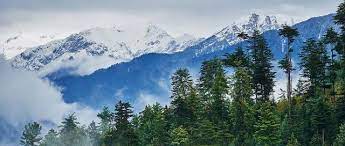The Great Himalayan National Park (GHNP) is a renowned national park located in the state of Himachal Pradesh, India. It was established in 1984 and covers an area of approximately 1,171 square kilometers. The park is recognized as a UNESCO World Heritage Site due to its exceptional biodiversity and unique ecosystem. Here are some key details about the Great Himalayan National Park:
- Location: The Great Himalayan National Park is situated in the Kullu district of Himachal Pradesh. It is located in the western part of the Himalayan range, spanning across the Seraj, Sainj, and Tirthan valleys.
- Biodiversity: The national park is known for its rich biodiversity, featuring a wide variety of flora and fauna. It is home to several endangered species, including the Western Tragopan, Himalayan Tahr, Snow Leopard, Himalayan Brown Bear, and Musk Deer. The park also boasts a diverse range of plant species, including coniferous forests, alpine meadows, and medicinal herbs.
- Trekking and Hiking: The Great Himalayan National Park offers excellent opportunities for trekking and hiking enthusiasts. There are several trekking routes within the park, such as the Tirthan Valley Trek, Sainj Valley Trek, and Parvati Valley Trek. These treks allow visitors to explore the stunning landscapes, spot wildlife, and experience the pristine beauty of the Himalayas.
- Wildlife Viewing: The park provides a unique chance to observe and photograph various wildlife species in their natural habitat. Apart from the flagship species like the Snow Leopard, visitors may encounter other mammals like the Himalayan Black Bear, Blue Sheep, Ghoral, and numerous bird species. The best time for wildlife viewing is during the early morning or late evening hours.
- Ecozone and Conservation Efforts: The Great Himalayan National Park is divided into four ecozones based on the altitude and vegetation. These ecozones are the Great Himalayan Peaks, Alpine Meadows, Coniferous Forests, and Tundra and Juniper Scrublands. The park management actively works towards the conservation of its unique ecosystems and promotes sustainable tourism practices.
- Entry and Permits: To enter the Great Himalayan National Park, visitors need to obtain permits from the park authorities. The permits can be obtained at the park’s reception center in Sai Ropa village, which serves as the entry point for the park. There is a nominal entry fee for Indian and foreign tourists.
- Best Time to Visit: The best time to visit the Great Himalayan National Park is from April to June and September to November when the weather is pleasant and the park is accessible. The park remains closed during the winter months due to heavy snowfall.
When planning a visit to the Great Himalayan National Park, it is advisable to check for any updated information, permits, and guidelines provided by the park authorities or the local tourism department.

